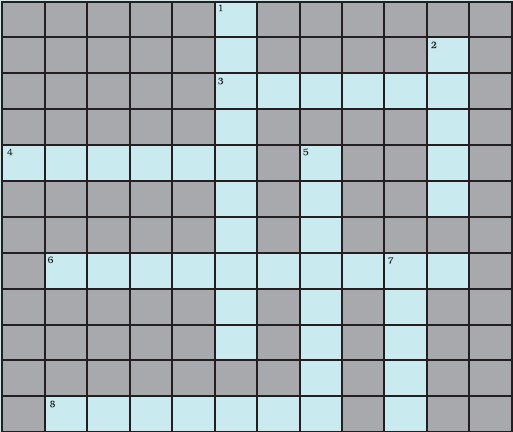Table of Contents
Class 7 science, chapter 18 Wastewater Story, explains how wastewater is created, treated, and handled. It teaches students about the importance of saving water and the methods used to clean and reuse wastewater. With clear explanations and fun activities, students learn why it’s important to keep things clean and hygienic for a healthy environment. The NCERT solutions in this chapter aim to encourage young people to be responsible with water and resources.
NCERT Solutions Class 7 Science Chapter 18 Wastewater Story PDF Download
Download the NCERT Solutions for Class 7 Science Chapter 18 Wastewater Story in PDF format to get detailed answers and explanations about wastewater management and treatment. This chapter teaches about the importance of water conservation, the process of treating wastewater, and the need for sanitation for a healthy environment. By downloading the PDF, students can easily access detailed solutions, understand complex concepts, and improve their learning. All NCERT Solutions class 7 are created by subject experts according to the latest CBSE syllabus (2025-26).
NCERT Class 7 Science Chapter 18 Wastewater Story Exercises Solution
1. Fill in the blanks:
- Cleaning of water is a process of removing impurities.
- Wastewater released by houses is called sewage.
- Dried sludge is used as manure.
- Drains get blocked by oils and fats.
2. What is sewage? Explain why it is harmful to discharge untreated sewage into rivers or seas.
Sewage is wastewater that contains impurities such as human waste, food scraps, oils, and chemicals. Discharging untreated sewage into rivers or seas is harmful because it pollutes the water, harms aquatic life, spreads diseases, and disrupts ecosystems.
3. Why should oils and fats be not released in the drain? Explain.
Oils and fats should not be released into the drain because they can solidify and block the drainage pipes, leading to clogged and overflowing drains. This can cause sanitation and health problems.
4. Describe the steps involved in getting clarified water from wastewater.
The steps involved are:
- Screening: Removing large solids.
- Primary Treatment: Settling of suspended solids.
- Secondary Treatment: Biological degradation of dissolved organic matter.
- Tertiary Treatment: Removing remaining impurities.
- Disinfection: Killing harmful microorganisms.
5. What is sludge? Explain how it is treated.
Sludge is the solid waste separated during the treatment of wastewater. It is treated through processes such as digestion, dewatering, and composting to reduce pathogens and volume, making it safe for disposal or use as manure.
6. Untreated human excreta is a health hazard. Explain.
Untreated human excreta is a health hazard because it contains harmful pathogens that can cause diseases such as cholera, typhoid, and hepatitis. It can contaminate water sources and the environment, leading to the spread of infections.
7. Name two chemicals used to disinfect water.
Chlorine and ozone are two chemicals used to disinfect water.
8. Explain the function of bar screens in a wastewater treatment plant.
Bar screens are used to remove large solids and debris from wastewater as it enters a treatment plant, preventing damage to equipment and ensuring smooth operation of the treatment process.
9. Explain the relationship between sanitation and disease.
Poor sanitation can lead to the spread of diseases as it provides a breeding ground for pathogens. Proper sanitation practices, such as safe disposal of waste and clean water supply, help prevent the transmission of diseases and promote public health.
10. Outline your role as an active citizen in relation to sanitation.
As an active citizen, you can promote sanitation by practicing proper waste disposal, avoiding littering, participating in cleanliness drives, educating others about hygiene, and supporting policies and initiatives for better sanitation infrastructure.
11. Here is a crossword puzzle: Good luck!

Solutions:

Across
3. Liquid waste products
4. Solid waste extracted in sewage treatment
6. A word related to hygiene
8. Waste matter discharged from human body
Down
1. Used water
2. A pipe carrying sewage
5. Micro-organisms which causes cholera
7. A chemical to disinfect water
12. Study the following statements about ozone:
- It is essential for breathing of living organisms.
- It is used to disinfect water.
- It absorbs ultraviolet rays.
- Its proportion in air is about 3%.
Which of these statements are correct?
- (a), (b) and (c)
- (b) and (c)
- (a) and (d)
- All four
Answer: ii) (b) and (c)
Which of these statements are correct?
- (a), (b) and (c)
- (b) and (c)
- (a) and (d)
- All four
- Chapter 1 Nutrition in Plants
- Chapter 2 Nutrition in Animals
- Chapter 3 Fibre to Fabric
- Chapter 4 Heat
- Chapter 5 Acids, Bases, and Salts
- Chapter 6 Physical and Chemical Changes
- Chapter 7 Weather, Climate, and Adaptations of Animals to Climate
- Chapter 8 Winds, Storms, and Cyclones
- Chapter 9 Soil
- Chapter 10 Respiration in Organisms
- Chapter 11 Transportation in Animals and Plants
- Chapter 12 Reproduction in Plants
- Chapter 13 Motion and Time
- Chapter 14 Electric Current and Its Effects
- Chapter 15 Light
- Chapter 16 Water: A Precious Resource
- Chapter 17 Forests: Our Lifeline
NCERT Solutions for Class 7 Science Chapter 18 Wastewater Story Free PDF
NCERT Solutions Class 7 Science Chapter 18 Wastewater Story Overview
This chapter specifically deals with the issue of contaminants in the water. Water is an important resource not just for humans but for all the organisms on earth. Therefore, contaminating this natural resource has dire consequences. The main reasons for water pollution are our commercial and industrial activities. All the waste effluents that reach water bodies results in water pollution. In the long run, this can cause many diseases and health hazards for us.
For instance, in Minamata City, Japan, mercury which runoff from a factory polluted the waters and the poisoning went undetected for decades. It came to notice only when the people saw their newborns had unusual birth defects. It was found that mercury runoff had contaminated the marine ecosystem, resulting in fish species ingesting the mercury. Over a period of time, mercury accumulation in fish species got transferred into human bodies who consumed contaminated fishes. This adversely affected bodily functions and caused a lot of problems for the people and their descendants. Hence, we need to take care of such issues by preventing industrial effluents which pollutes our most precious resource – water.
- CBSE Class 7 Science Syllabus
- CBSE Class 7 Maths Syllabus
- CBSE Class 7 English Syllabus
- CBSE Class 7 Social Science Syllabus
- CBSE Class 7 Hindi Syllabus
Topics Covered in NCERT Solution for Class 7 Science Chapter 18 Wastewater Story
The NCERT class 7 science chapter 18 Wastewater Story covers various topics related to wastewater and its management. Some of the key topics include:
- Water, Our Lifeline: This section discusses the importance of water in our daily lives and how it is essential for maintaining the ecosystem.
- What Is Sewage?: This topic explains the concept of sewage, which is the wastewater released by houses and industries.
- Water Freshens Up-An Eventful Journey: This section describes the journey of water from its source to the wastewater treatment plant.
- Wastewater Treatment Plant: The chapter discusses the processes involved in treating wastewater to make it safe for reuse or disposal.
- Better Housekeeping Practices: This topic emphasizes the importance of adopting good housekeeping practices to reduce waste and prevent water pollution.
- Sanitation and Diseases: The chapter highlights the relationship between sanitation and diseases caused by the presence of pathogens in contaminated water.
- Alternative Arrangement for Sewage Disposal: This section explores various methods of sewage disposal, such as on-site sewage disposal systems and composting.
- Sanitation at Public Places: The chapter discusses the role of public sanitation practices in maintaining hygiene and preventing the spread of diseases.
The NCERT solutions for class 7 science Ccapter 18 “Wastewater Story” provide detailed explanations and examples to help students understand these concepts better.
FAQs on NCERT Solutions for Class 7 Science Chapter 18 Wastewater Story
What is wastewater story class 7?
In Class 7 Science Chapter 18, the wastewater story explains how water becomes polluted, the process of wastewater treatment, and the importance of maintaining clean water sources to prevent waterborne diseases and environmental degradation.
What is sludge Class 7 short answer?
In Class 7, sludge refers to the solid waste that settles at the bottom during the wastewater treatment process. It is treated and can be used as manure.
What is wastewater short note?
Wastewater is water that has been used and contaminated by human activities, such as domestic use, industrial processes, and agricultural runoff. It requires treatment before being released back into the environment.
What are the steps involved in getting clarified water from wastewater class 7th science?
The steps include: Screening to remove large objects. Sedimentation to settle solid waste. Filtration to remove smaller particles. Chlorination to kill germs. Aeration to improve water quality.
What are the three sources of wastewater Class 7?
The three sources of wastewater are: Domestic waste from households. Industrial waste from factories. Agricultural runoff from farms.
Where can I find the PDF of NCERT Solutions of Chapter 18 of Class 7 Science?
You can find the PDF of NCERT Solutions for Chapter 18 of Class 7 Science on the Infinity Learn website, where they offer comprehensive and easy-to-understand solutions for students.









